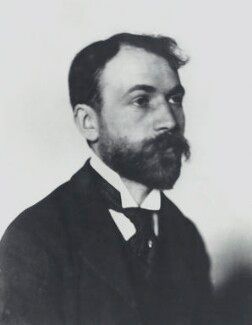How Bernard Berenson Made Art a Hands-On Experience
Bernard Berenson, the maverick art historian, didn't just see art; he felt it with his hands. He believed in a world where paintings weren't just visuals but tactile gateways to an intoxicating realm of sensations.

In the world of art, there are those who simply appreciate the beauty of a painting, and then there are those who dissect it, exploring the depths of its history, meaning, and emotion. Bernard Berenson, a name that might not ring a bell for many today, was the latter—a man who not only understood art but lived and breathed it, forever changing the way we perceive the masterpieces of the Italian Renaissance.
Imagine a world where the Mona Lisa was not celebrated as a masterpiece, where the name “Renaissance” didn't evoke the flourishing of art, culture, and intellect. It's challenging to envision such a reality, yet it might have been our world had it not been for a group of historians in the late 19th century who embarked on a mission to invent the Italian Renaissance.
At that time, the art world was in flux, trying to explain the sudden stylistic shift that characterized the Quattrocento (the 15th century). Amid a plethora of theories, these historians brought forth a wave of discoveries, unearthing countless artists who had been obscured by time. Among them, Bernard Berenson stood out not only as an art historian, but also as a fervent advocate for the art he helped rediscover.
Berenson: The Artistic Guru of His Time
Berenson was more than a scholar; he was a legend. The New York Times described his passing in 1959 as the loss of a man who had become a cultural icon, a sage, and a humanist. Despite authoring only one book, “The Italian Painters of the Renaissance,” Berenson's insights were revered like gospel by younger historians. His fame was so profound that his essays were considered essential reading.
One of the reasons for Berenson's success was his unique approach to art—a multisensory experience. He urged viewers not only to see, but also to feel art with their hands. He believed that paintings offered more than just visual beauty; they possessed tactile qualities that could stimulate the senses. In his view, this tactile connection allowed artists to create a profound impression of reality, making the observer feel as though they could reach out and touch the figures in the artwork.
Berenson's Controversial Theories
Berenson's theories on art, particularly his emphasis on tactile engagement, were revolutionary but not without controversy. He encouraged readers to engage with artworks on a sensory level, invoking imagination and embracing a more emotional, sensual connection. This approach, however, clashed with the views of his contemporary rival, Aby Warburg, who found it too primitive and non-critical.
In Berenson's perspective, art had the power to captivate and inspire, making viewers want to emulate it. He believed that art immersed viewers in a realm of sensations, akin to an elixir of life flowing through their veins. While some scholars dismissed this synesthetic pleasure, Berenson's ideas pushed the boundaries of aesthetic experience.

Berenson: The Attributer Extraordinaire
Beyond his theories, Berenson was renowned for his talent as an “attributer.” He played a pivotal role in identifying previously anonymous artworks. Collectors sought his approval before making any purchases, and they paid handsomely for his expertise. Berenson's visual memory was prodigious, and his attributions were legendary. His success led him into the world of art dealing, even partnering with the Duveen brothers, art dealers who orchestrated numerous museum acquisitions.
However, this partnership had its share of controversies, one notably involving a Giorgione painting that Berenson insisted was by Titian. The dispute strained his reputation, and his career took a different turn.
A Fading Figure: Berenson vs. Warburg
As Berenson's career shifted towards art dealing, Aby Warburg's theories gained prominence. Warburg challenged the connoisseurs' hedonistic and aestheticized approach to art, advocating for a more profound understanding of images in their cultural and historical contexts.
Warburg's ideas resonated with a new generation of art historians, leading many to shift their focus from connoisseurship to broader inquiries about art's societal significance. Berenson, once the shining star of art history, found himself overshadowed by Warburg's growing influence.
Despite the evolution of art history and the complex narratives that surround art, the public has remained captivated by the timeless appeal of masterpieces. Bernard Berenson's contribution to the world of art cannot be overlooked. He taught us to engage with art on a profound level, to let our senses guide us, and to allow the power of art to envelop us.
As we gaze upon the Mona Lisa or any other masterpiece, we owe a debt of gratitude to Berenson for helping us unlock the secrets of these timeless treasures. His legacy lives on, a reminder that art is not merely a visual experience but a journey that engages all our senses and emotions, inviting us to explore the depths of human creativity and expression.
In-text Citation: Minera, María. ‘Bernard Berenson | María Minera’. Revista de La Universidad de México, https://www.revistadelauniversidad.mx/articles/d52535ed-95f2-432d-93fd-05d71292880c/bernard-berenson. Accessed 7 Sept. 2023.




